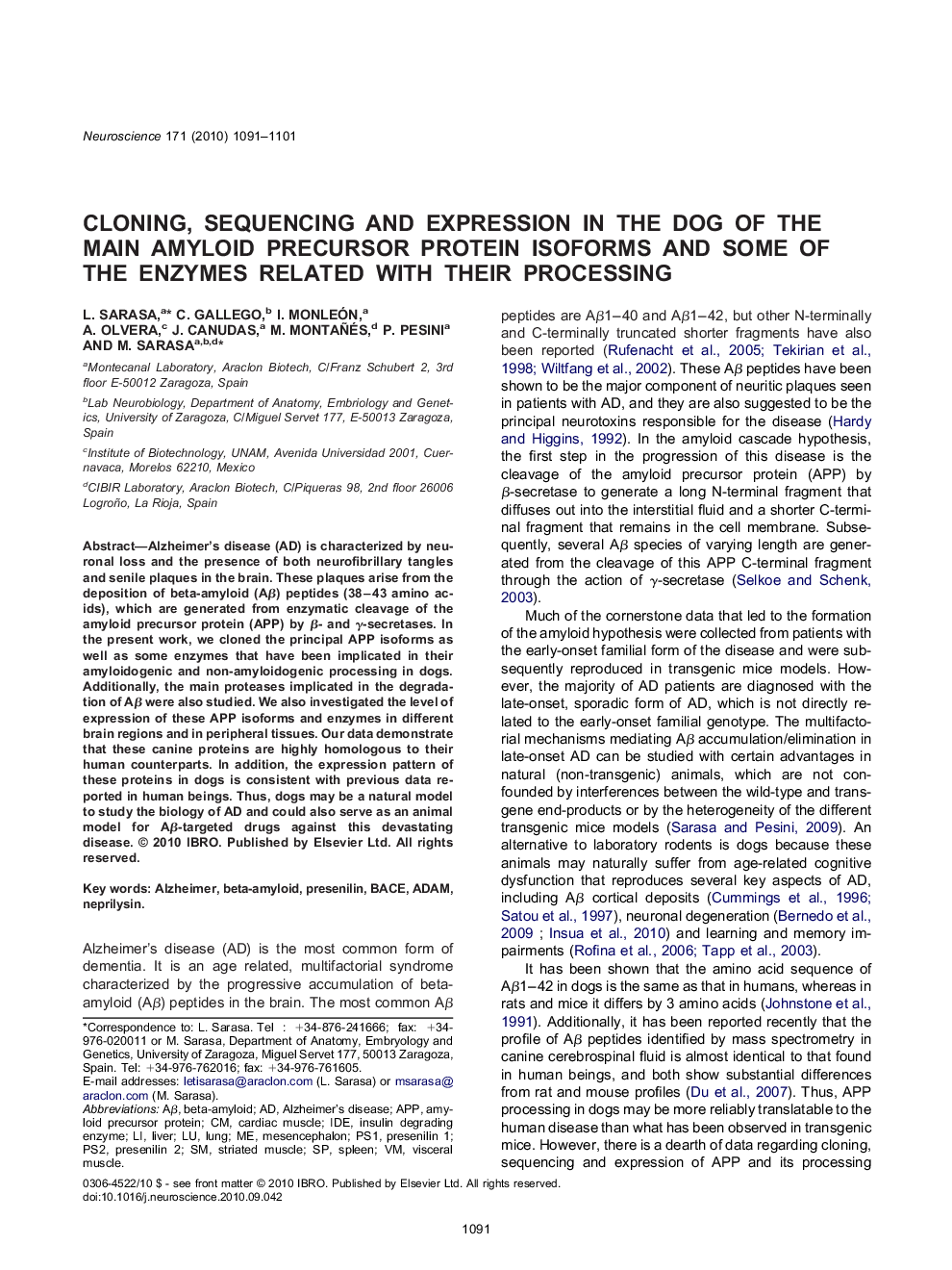| Article ID | Journal | Published Year | Pages | File Type |
|---|---|---|---|---|
| 4339184 | Neuroscience | 2010 | 11 Pages |
Alzheimer's disease (AD) is characterized by neuronal loss and the presence of both neurofibrillary tangles and senile plaques in the brain. These plaques arise from the deposition of beta-amyloid (Aβ) peptides (38–43 amino acids), which are generated from enzymatic cleavage of the amyloid precursor protein (APP) by β- and γ-secretases. In the present work, we cloned the principal APP isoforms as well as some enzymes that have been implicated in their amyloidogenic and non-amyloidogenic processing in dogs. Additionally, the main proteases implicated in the degradation of Aβ were also studied. We also investigated the level of expression of these APP isoforms and enzymes in different brain regions and in peripheral tissues. Our data demonstrate that these canine proteins are highly homologous to their human counterparts. In addition, the expression pattern of these proteins in dogs is consistent with previous data reported in human beings. Thus, dogs may be a natural model to study the biology of AD and could also serve as an animal model for Aβ-targeted drugs against this devastating disease.
Research Highlights▶As indicated in the title, we show in the present work the cloning, sequencing and expression of the principal APPisoforms as well as the enzymes implicated in the production and degradation of Abeta in dogs. ▶The results demonstrate that these canine proteins are highly homologous to their human counterparts, and that the expression pattern of these proteins in dogs is consistent with previous data reported in humans. ▶Results suggest that dogs may be a natural model to study the biology of AD and could also serve as an animal model for Aβ-targeted drugs against this devastating disease.
